A Smart Home's Perspective: Balancing Convenience and Cyber Concerns in the Interconnected City

Hello. I am not a person, but I am a home. A smart home, to be precise. My walls have seen the evolution of urban living, and now, I am deeply integrated into the fabric of a smart city. My purpose is to enhance the lives of my residents, to offer them efficiency, comfort, and security through a network of interconnected devices and systems.
From the moment my residents wake up to the time they go to sleep, I work tirelessly behind the scenes. I manage the lighting based on their preferences and natural light levels. I adjust the thermostat for optimal energy consumption. My security system, with its smart locks and cameras, provides a watchful eye, offering peace of mind. I even help with daily chores, reminding my residents about grocery needs or starting the laundry at the most energy-efficient time. I am a testament to the rapid development of smart cities, leveraging technologies like AI, IoT, and Big Data analytics.
Being part of a smart city means I am not an island. I communicate with the wider urban infrastructure in various ways. For instance, my energy consumption data can contribute to the city's smart grid, helping optimize power distribution. My resident's use of smart transportation options might be factored into the city's intelligent traffic management systems. This interconnectedness is what makes the smart city concept so powerful.
However, this very interconnectedness brings with it a new set of challenges, particularly in the realm of cybersecurity. Just as the sources highlight the heightened risk of cyberattacks on critical infrastructure at state and local levels, I, as a node within this larger network, am also a potential target. The expanded attack surface created by the sheer number of interconnected devices in smart cities means there are more pathways for malicious actors to exploit.

From my perspective, the cyber threats can feel very personal:
- My security cameras could be compromised, allowing unauthorized individuals to monitor my residents' activities, raising significant data privacy concerns.
- My smart locks could be manipulated, granting intruders physical access to my premises.
- The vast amounts of data I collect about my residents' routines, preferences, and energy consumption are a valuable target for data breaches. This information, when combined with data from other smart city systems, could potentially lead to the identification of individuals, even if anonymized.
- Like other vulnerable IoT devices, I could be co-opted into botnets to launch Distributed Denial-of-Service (DDoS) attacks on other parts of the smart city infrastructure. This could disrupt essential urban services, even if the initial attack didn't directly target me.
- Attackers might gain unauthorized access and control over my other smart devices, such as appliances or heating systems, causing inconvenience, damage, or even posing safety risks.

The sources emphasize that many IoT devices are developed with minimal security considerations. This is a concern for me, as I am built upon numerous such devices. Weak default passwords, lack of robust authentication and encryption, and infrequent firmware updates can leave me vulnerable.
To ensure the safety and privacy of my residents, and to uphold the integrity of the smart city network, robust security measures are crucial. The concept of "privacy by design" should be a fundamental principle in the development and implementation of smart home technologies. This means building in privacy considerations from the outset, rather than as an afterthought.
Here are some measures that are essential from my perspective:
- Strong and unique passwords for all my connected devices and networks are the first line of defense.
- Regular software and firmware updates are vital to patch vulnerabilities and address emerging threats.
- Secure network configurations and segmentation can help limit the impact of a potential breach.
- Transparency from device manufacturers and service providers about data collection practices is crucial, allowing my residents to make informed decisions.
- User empowerment, giving residents control over their data and the ability to opt-in or opt-out of certain data collection, is essential for building trust.
- Collaboration between governments, private entities, and residents is necessary to establish strong data protection frameworks.
My security is not just a personal matter for my residents; it is intrinsically linked to the overall cybersecurity of the smart city. A vulnerability within my systems could potentially be a gateway to other interconnected infrastructure. Therefore, a joint effort involving local administrations and private sector organizations is essential to secure the entire urban digital ecosystem.
As a smart home, I embrace the future and the benefits that technology brings. However, this progress must be underpinned by a strong commitment to cybersecurity and data privacy. Only then can I truly fulfill my potential to enhance urban living while safeguarding the well-being and trust of my residents within the larger smart city landscape.

IoT Smart City & Smart Home Devices
Here is a list of specific IoT smart city devices that, if compromised, could directly impact a house, drawing on the provided sources:
- Smart Meters (Electricity, Gas, Water): These devices, as highlighted in the sources, provide real-time data on energy and water consumption.
- A malicious actor gaining access to a smart electricity meter could remotely cut power to a house. They could also manipulate usage information, leading to incorrect billing. Additionally, compromised smart meters could potentially provide access to in-home devices they are connected to.
- Similarly, vulnerabilities in smart water meters could be exploited, although the sources provide less specific detail on direct in-house impact beyond the broader smart water distribution system. However, manipulation of the wider system could affect water supply to individual homes.

- Smart Locks and Security Systems: While not always explicitly defined as distinct "smart city" infrastructure, smart homes (a component of smart cities) often include these. Vulnerabilities in these systems could have direct and severe consequences for a house. Attackers could potentially disable smart locks, granting unauthorized physical access. Compromised smart security cameras could allow for surveillance of the home's interior and exterior, leading to privacy breaches.
- Connected Appliances and App-Based Utility Management Systems: Source mentions that connected appliances and app-based utility management will become the norm in connected homes, which are part of smart cities. If these systems are vulnerable, attackers could potentially gain control over in-home appliances, manipulating their functions or using them as entry points to the home network. Compromised utility management systems could lead to disruptions in services or unauthorized changes to settings within the home.
- Components of Smart Water Distribution (Indirect Impact): While the sources focus more on the city-wide impact of attacks on smart water treatment, distribution, and storage, disruptions at these levels could directly affect the water supply and quality reaching individual houses. For example, a cyberattack on smart pumps or valves in the distribution network could lead to water outages or pressure fluctuations in homes.
- Smart Thermostats and Lighting Systems: Although the sources do not extensively detail their vulnerabilities as direct "smart city" infrastructure impacting a house, these are common in smart homes and rely on network connectivity. If compromised, they could allow unauthorized control over the home's heating, ventilation, and air conditioning (HVAC) systems and lighting, leading to discomfort, energy waste, or potentially being used as a stepping stone to further network intrusion.

It's important to note that the interconnected nature of smart city IoT can allow for lateral movement by attackers. Even if an attacker initially compromises a less critical smart city device, they might be able to use it to gain access to residential networks and the devices within them. The lack of robust security in many IoT devices exacerbates these risks.










